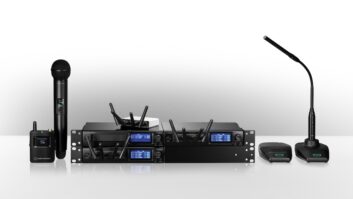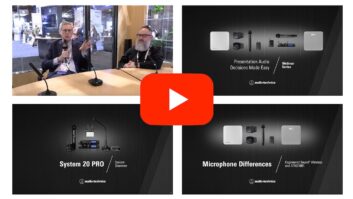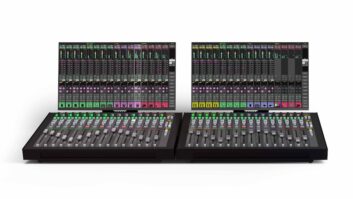
Ground loop hum is something any experienced audio engineer, contractor or installer has encountered. That signature, low-level 60 Hz hum in the background. It’s ruining what would otherwise be objectively good audio. Ground loop may not limit itself exclusively to 60 Hz cycle hum (it will be the 50 Hz cycle variety for our friends in Europe) but 60 Hz is typically the guest of honor wrecking sensational sound at gatherings of all type and size. It is quite common to find associated harmonics have been invited to the party as well, as multiples of 60 Hz ranging from 120 Hz on up to fairly high-pitched buzz.
Unfortunately, even the best mix on the most perfectly tuned top-of-the-line system will be rendered subpar the moment audible hum or buzz shows up on the noise floor. It is perceivable interference when audio is present, and it becomes rather maddening during lulls in program material. People rightfully expect the system to be dead quiet when the music or speech stops.
Unlike low level hiss, which can sometimes receive a pass for having a certain soothing characteristic (picture a waterfall in the distance), hum or buzz is universally perceived as annoying. It is the audio equivalent of bright florescent interrogation lights.
Therefore, it is important for any audio professional to not only be able to properly diagnose the problem, but also to have the ability to effectively resolve the issue when it rears its ugly head.
Let’s Troubleshoot!
When troubleshooting this particular problem, it is critical to remember that ground loop is not the only source of hum, so the first step is to assess the source and, if possible, the cause of the noise. We could be dealing with a lack of shielding on a cable, unterminated cable acting as an antenna, an inherently noisy piece of gear, electromagnetic interference or even poor gain structure. This discussion is directed specifically at noise induced by grounding issues.
Ground loop hum is unique in that it is caused by virtue of simple, direct connection between two or more pieces of gear, and is created by small differences in ground potential causing current flow between the ground of the two products. There is a measurable AC voltage between ground of product A and product B. The root cause of this difference in ground potential could be both external as well as internal to the products in question—external, in this case, being different circuits in a building, bad wiring in the wall, and internal being poor chassis to circuit ground connection inside one of the products.
Basically, anything that can create a few milliohms of resistance can result in a voltage difference that causes current to flow and thus hum to manifest. To eliminate this current flow between grounds, we either need to eliminate the voltage potential or the current path. In practice,e the latter is infinitely more feasible in real-world scenarios, but first, we must pinpoint the cause.
Divide and Conquer
There’s a hum, it’s a big system and it could be coming from anywhere, so where do we begin?
The answer is to simplify the system to the most basic elements and work our way back from there. When we introduce one small piece to the puzzle, piece by piece, and hum suddenly appears, we’ve found our first big clue to guide the direction of the investigation. Follow this order for piecing together your puzzle:
1) Amplifier connected to speakers
2) Speaker processor connected to a single amp and speakers
3) Second amplifier added to the equation
4) Output of a mixing console connected to speaker processor and amplifiers
5) One input source at a time, connected to input of the mixing console
Once we have identified the direct connection that creates the loop, we then need to examine the exact nature of input, output and interface wiring used to make the connection between the two. As long as we have a balanced, differential input, we can resolve the issue through the utilization of a little creative wiring.
Favorite Tool in the Box: The Telescope
If we are fortunate enough to encounter a loop between a balanced output drive and a balanced input, the solution is a simple modification to the interface wiring. We simply disconnect ground/shield at the source end only.
This technique effectively eliminates direct electrical connection between the two devices while maintaining a pathway to earth ground for the shield of the cable, and uses the balanced positive and negative drive lines for signal transfer.
This technique is commonly referred to as “telescoping ground.” If the person who first invented this trick hasn’t already received a Nobel Prize for having done so, and it worked for you, please allow now to be the moment you personally submit that nomination.
However, ground loops are much more commonly associated with interconnections involving an unbalanced input or output. This is because an unbalanced connection involves only positive and ground for signal transfer. If we still have one balanced input or output in the equation, we can once again fall back on telescoping ground.
We still use balanced, 3 conductor interface wiring. We still connect shield to ground at one end only—the end where there is a balanced input/output—and we use the two inner conductors for signal transfer. Still brilliant and highly effective for all the same reasons.
The only time we can’t get away with implementing some variation of the telescoping ground typology to resolve ground loop hum is when we are dealing with both an unbalanced output and unbalanced input for the interconnection. In this case, there is only positive and ground, and if you break the ground connection, congratulations: You now own a broken cable. What to do now?
The Secret Weapon: Electromagnetism
If we can’t break the connection between grounds, are we doomed to the sound of heavy machinery maneuvering in the background as we listen to our music? Of course not! There is another truly great invention called the “isolation transformer.” This combines the magic of magnetism with the mojo of electricity to couple signal transfer with no direct electrical connection at all.
To use the isolation transformer, you simply connect it directly in line between two devices where you’re having trouble. There is really no need to understand the specifics on why this fixes the problem unless you are really into studying transformers, just that it is a beyond helpful tool to utilize if nothing else works.
Once considered magic, these devices are now commonly available at quite reasonable pricing. Keep that in mind as a stocking stuffer for the audio enthusiasts in your lives. It’s always handy to have one around, as you never know when you may need it.
Final Steps
Follow these tips and you’ll more than likely find the culprit. If not, turn to your support teams—every manufacturer should be ready and willing to help you troubleshoot a system backed by their solutions. If not, it’s time to find a manufacturer that views you as a partner!
In the end, the only hum should be the people who don’t know the words to the song, and the only buzz should be the crowd discussing how much they enjoyed the performance. Don’t settle—troubleshoot, seek support and knock out the noise that doesn’t belong!
Jim Schwenzer is the Director of Service & Technical Support for Ashly Audio, spearheading the daily customer service operations for over 23 years. Accredited Electrical Technician, Audio Engineer, and professional musician with more than 35 years of experience in the field, Jim has transformed his passion for audio and knowledge of electronics into a front-line asset for Ashly’s customers.







